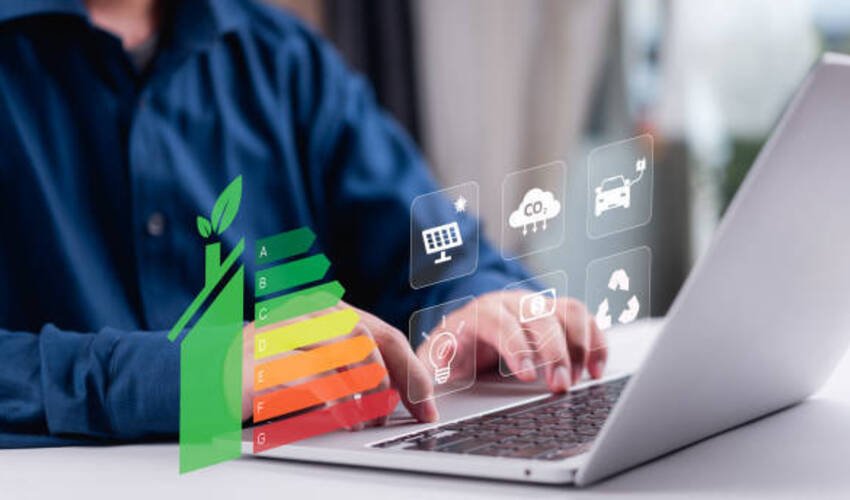Technology is growing every day. We use more computers, servers, and devices than ever before. But with growth comes a cost. These systems use a lot of energy. That’s where energy-efficient computing comes in.
In 2025, new trends are shaping the way we save power. These trends help reduce energy use while boosting performance. In this article, we will explore the top trends in energy-efficient computing this year.
1. Smarter Data Centers
Data centers use massive amounts of energy. In 2025, many are switching to smart cooling systems. These systems use AI to control temperatures. They reduce power without harming performance. Green data centers also use solar or wind power. This makes them more sustainable. Companies now build centers in cooler places to save on cooling.
2. Rise of ARM-Based Processors
ARM chips use less energy than older x86 chips. Big companies like Apple and Microsoft now use them. These processors are small, fast, and efficient. In 2025, more devices will shift to ARM. This trend boosts energy-efficient computing across phones, laptops, and servers.
3. AI Optimization for Energy Savings
Artificial intelligence is not just for smart tasks. It now helps in saving power, too. AI systems monitor energy use in real time. They shut down idle machines. They also adjust workloads for better energy use. This makes systems run smarter and greener.
4. Green Cloud Services
Cloud services are now going green. Google, Amazon, and Microsoft aim for zero carbon emissions. They use renewable power and efficient hardware. In 2025, cloud platforms will be cleaner and smarter. Businesses now choose providers based on their green efforts. This trend pushes the whole industry forward.
5. Smarter Software Design
Efficient software uses less power. Developers now build apps that require fewer resources. They remove unused code and reduce background activity. Lightweight apps mean less work for the processor. This saves power and extends battery life in devices.
6. Advanced Sleep and Idle Modes
Modern devices now enter low-power states when not in use. Laptops, phones, and servers use deep sleep modes. In 2025, idle modes are smarter and faster. Devices wake up quickly without using extra power. This saves energy while keeping performance high.
7. Eco-Friendly Hardware Materials
New hardware is built with energy-saving materials. Companies now use recycled parts and low-energy chips. In 2025, many laptops and servers will have green certifications. This shows they follow eco-standards. It also helps reduce e-waste and pollution.
8. Use of Liquid Cooling Systems
Cooling systems are now getting smarter. In 2025, liquid cooling is more common in data centers. This method is more efficient than air cooling. It uses less energy and cools faster. It also extends the life of computer parts.
9. Energy-Efficient Edge Computing
Edge computing means processing data near the source. This reduces the need to send data far. It lowers energy use and speeds up response. In 2025, edge devices will be smarter and more efficient. They use less energy and deliver quick results.
10. Government Policies and Green IT Goals
Governments now push for greener tech. New laws support energy-saving tools. They also reward companies that follow green IT rules. In 2025, more firms will follow energy standards. This includes better hardware, cleaner data centers, and smarter power use.
11. Smarter Power Management in Devices
Laptops, tablets, and phones now come with advanced power settings. These settings adjust based on user needs. In 2025, power-saving modes will be more accurate. They learn how you use your device. Then, they adjust brightness, CPU speed, and network use.
12. Energy Scoring and Monitoring Tools
Companies now use tools to track energy use. These tools show where energy is wasted. In 2025, real-time dashboards show energy use per device. IT teams use this data to make smart changes. This supports energy-efficient computing across the workplace.
13. Green AI Training Models
AI training uses lots of power. Now, engineers are building green models. These models train faster and use fewer resources. In 2025, green AI is a top goal. Teams use smaller models with better results. This lowers costs and saves power.
14. Battery Innovations and Energy Harvesting
Battery life is a key part of energy use. In 2025, new battery tech lasts longer and charges faster. Some devices even collect energy from light or movement. These features support energy-efficient computing in portable gadgets.
15. Collaboration Between Tech Giants
Big tech companies now work together to save energy. They share ideas and build green tools. In 2025, we see more open-source projects for energy tracking. These tools help businesses adopt green habits faster.
Final Thoughts
Energy use is a growing concern in the tech world. As systems grow faster, they also demand more power. But 2025 brings hope. With smarter software, greener hardware, and clean cloud services, the future is bright. Companies now see that saving energy also saves money. Energy-efficient computing is not just a trend. It’s a must for a better planet. Businesses, developers, and users all play a role. By following these trends, we move toward a smarter, greener world.



